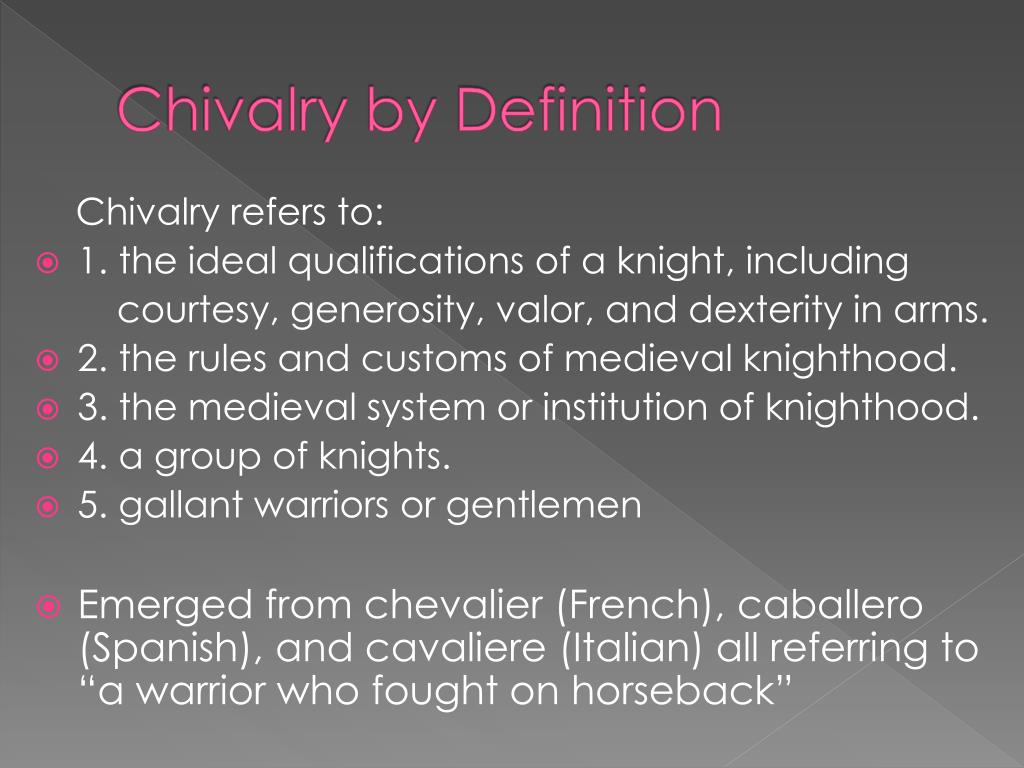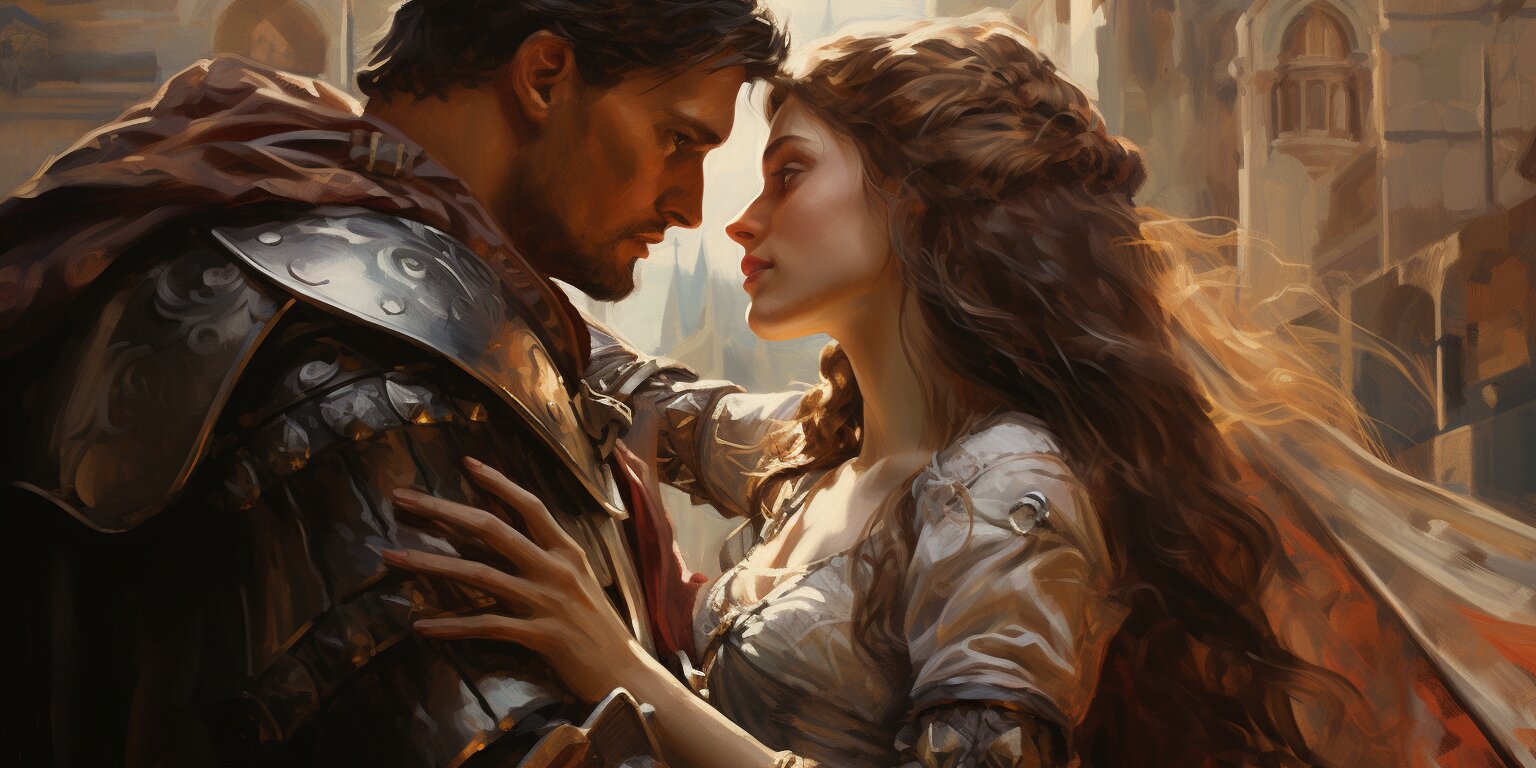What Is Chivalry Meaning Today- A Look At Modern Courtesy
When people talk about how folks act, especially how men interact with women, they often bring up a word that carries a lot of history: chivalry. This idea, you know, usually points to a way of behaving that shows respect and honor, with a good deal of politeness thrown in. So, when someone says something like “chivalry is dead,” they are, in a way, expressing a bit of sadness about what they see as a decline in these thoughtful actions, particularly from men toward women. It is a feeling that a certain kind of considerate conduct might be missing from daily interactions.
This notion of good manners and upright conduct, which we now associate with chivalry, actually has quite old roots. It is not just a modern idea, but one that has been around for a long, long time, nearly a thousand years, in some respects. The concepts that form what we now call chivalry, that is, a set of informal rules about how to act, started to take shape in Europe between the years 1170 and 1220. It was a code that was not written down in a strict book, but rather something that changed and developed over time, guiding how people were expected to carry themselves.
So, while the term itself has these deep historical connections, its common use now really points to how people generally treat each other with respect and thoughtfulness. It is about a certain kind of character, a way of being that shows consideration for others, especially those around you. The fundamental idea, then, is about a kind and courteous manner, showing a considerate spirit in everyday life, which is still very much a part of how many people view good behavior, even today.
Table of Contents
- What Does Chivalry Meaning Really Point To?
- The Historical Beginnings of Chivalry Meaning
- Who Were the Knights in the Chivalry Meaning?
- What Were the Qualities of Chivalry Meaning for a Knight?
- Is Chivalry Meaning Still Relevant for Men and Women?
- The Code of Chivalry Meaning - More Than Just Fighting
- How Did the Idea of Chivalry Meaning Evolve?
- What is the Broader Scope of Chivalry Meaning?
What Does Chivalry Meaning Really Point To?
When we talk about the modern sense of chivalry, it often boils down to a very polite, honest, and kind way of acting, especially when men are interacting with women. This can look like small, everyday courtesies that show consideration. For example, a man might hold a door open for someone, or perhaps offer his jacket if it is cold outside, just a little gesture of care. These simple actions are what many people think of when they consider what chivalry means in our current times. It is about being thoughtful and showing respect in practical ways, which, you know, can make a real difference in how people feel.
It is interesting how many women, in particular, feel that this kind of courteous behavior is not as common as it once was. They might see it as a sort of lost art, something that has faded from everyday interactions. This sentiment often comes up when discussions turn to how men and women treat each other, and whether certain traditions of politeness are still upheld. So, when people express that "chivalry is dead," they are often, basically, lamenting the absence of these thoughtful gestures that once seemed more prevalent, a sign, perhaps, that some traditions of kindness are less frequently seen.
The Historical Beginnings of Chivalry Meaning
The concept of chivalry, or what was sometimes called the chivalric language, was an unwritten and changing set of rules for behavior that appeared in Europe. This code came into being between the years 1170 and 1220. It was not a rigid set of laws, but rather a collection of customs and expectations that people in certain parts of society were supposed to follow. So, it was a pretty fluid system, adapting as times changed, which is kind of fascinating when you think about it.
This historical code was, in essence, a guide for how individuals, especially those in positions of power or those who were warriors, should conduct themselves. It covered a range of behaviors, from how they fought to how they treated others in society. It was, you might say, a framework for honorable conduct that slowly took shape during a specific period in European history, influencing the actions and attitudes of many people in those times, truly shaping the social fabric.
Who Were the Knights in the Chivalry Meaning?
The primary way people understood the term "chivalry" in Europe during the Middle Ages was to mean 'knights,' or 'fully armed and mounted fighting men.' This was the original, core sense of the word, pointing directly to a specific group of individuals who played a very important part in the society of the time. These were the warriors, the protectors, the ones who rode into battle with their gear and their horses, so, they were quite a sight to behold.
This group, the knightly class, was a significant part of the feudal system. They were the military backbone, providing protection and enforcing order, and their way of life was deeply tied to the land and the lords they served. So, when people spoke of chivalry back then, they were often referring directly to these fighting men and the world they inhabited, a world of castles and combat, of loyalty and service, which was, basically, the very definition of their existence.
What Were the Qualities of Chivalry Meaning for a Knight?
The ideal characteristics expected of a knight were quite a comprehensive list, truly encompassing what it meant to be a person of honor in those days. These included things like courtesy, which meant being polite and respectful to everyone, even those beneath them in social standing. Then there was generosity, a willingness to give freely and be open-handed, which was a highly regarded trait. Valor, of course, was also a key part, meaning great courage and bravery in the face of danger, particularly in battle, which, you know, was a pretty common occurrence.
Beyond those, dexterity in arms was also a significant qualification. This refers to a knight's skill and ability with weapons, their proficiency in combat, which was, naturally, essential for their role as fighting men. So, the "sum of the ideal qualifications of a knight" really meant a combination of these noble personal traits and practical fighting skills, all coming together to form the picture of a true medieval warrior and gentleman, a person who was, in a way, a complete package of strength and grace.
Is Chivalry Meaning Still Relevant for Men and Women?
In our modern world, the idea of chivalry often comes up in the context of men behaving courteously toward women. This can take many forms, from simple actions like holding a door open for them to offering a jacket when the air gets a bit chilly. These kinds of gestures are seen by many as acts of chivalry, small ways to show respect and care in everyday interactions. It is, basically, about demonstrating a thoughtful and considerate nature, something that, you know, can make social interactions a little smoother.
The question of whether these behaviors are still relevant is one that sparks a lot of discussion. While some might view them as outdated, many others still appreciate these acts of politeness, seeing them as a sign of good upbringing and genuine consideration. So, the continued practice of such courtesies really points to a desire for respectful interactions between people, a quiet acknowledgment that some traditions of kindness still hold value, even in a fast-paced world, which, in some respects, is a nice thought.
The Code of Chivalry Meaning - More Than Just Fighting
The rules and customs of medieval knighthood formed a complex system or institution that guided the lives of knights. This was not just about fighting, but about a whole way of life, a set of principles that governed their conduct both on and off the battlefield. It encompassed their interactions with lords, ladies, and common folk, setting standards for honor, loyalty, and justice. So, it was, in a way, a comprehensive guide to being a noble person in their society.
This medieval system, with its principles and customs, created a framework for how knights were expected to live. It meant adhering to certain moral standards, showing bravery, and acting with integrity in all situations. It was a code that, you know, went beyond just military prowess, shaping their entire character and their place within the social order, truly defining what it meant to be a knight in those distant times.
How Did the Idea of Chivalry Meaning Evolve?
The way we talk about chivalry has certainly changed over time. The original sense of the term in Europe during the Middle Ages pointed directly to 'knights,' or 'fully armed and mounted fighting men.' From this very specific meaning, the term gradually came to represent a broader set of ideas. It moved from being about a particular group of warriors to encompassing a wider concept of honorable behavior and a code of conduct that applied to more than just those who carried a sword. So, it really grew beyond its initial definition, which is quite common for words, actually.
This shift meant that chivalry started to describe not just the knightly class itself, but also the institution or customs of medieval knighthood. It began to refer to the entire system that governed their lives, including their values, their social roles, and their expected behaviors. It was, in some respects, a natural progression as the idea of what a knight represented broadened, moving from a literal warrior to an ideal of conduct that others might aspire to, which, you know, is pretty neat.
What is the Broader Scope of Chivalry Meaning?
Beyond the individual knight, the concept of chivalry also extended to mean a group of knights or gallant people. This suggests that it was not just about one person's actions, but about a collective adherence to a certain standard of behavior. When people spoke of chivalry in this broader sense, they were referring to a community of individuals who shared common values of courage, generosity, and courtesy, creating a kind of shared identity based on these noble traits, which, basically, created a strong bond among them.
Ultimately, the medieval system, principles, and customs of knighthood all fall under the umbrella of chivalry. It was a comprehensive way of organizing a part of society, setting forth the expectations for its members. This included the moral guidelines, the social etiquette, and the warrior ethos that defined the knightly class. So, it was a very complete picture of how a certain segment of society was supposed to operate, a system that, you know, shaped an entire era.
So, to bring it all together, the idea of chivalry, whether we look at its old roots with knights or its current meaning of polite, honorable behavior, always comes back to a certain way of conducting oneself. It is about acting with respect and kindness, showing consideration for others, and upholding a sense of personal integrity. This concept, in its various forms, has been a part of human interaction for a very long time, and its core message of thoughtful conduct remains something many people value, actually, in their daily lives.

Chivalry | Definition & Examples | Britannica

PPT - Medieval Chivalry PowerPoint Presentation, free download - ID:1396576

Exploring the Definition of Chivalry in Today's World